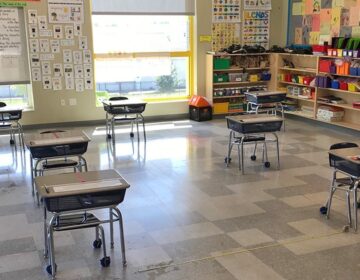N.J. residents tell pollster schools are diverse. Data says otherwise
Because of a suit seeking to desegregate New Jersey schools, pollsters asked residents about school population diversity. Most said status quo is “fine.”

(Rawpixel.com/BigStock)
A new poll by Rutgers-Eagleton/Fairleigh Dickinson University suggests a disconnect between the public’s perception and reality when it comes to racial integration in New Jersey public schools.
More than 80% of New Jersey residents surveyed said their local school districts had a good mix of people of different racial and ethnic backgrounds, despite data pointing to the contrary and a legal battle to integrate schools.
Ashley Koning, director of the Eagleton Center for Public Interest Polling, said the results were particularly interesting because “we know that New Jersey, even though it’s one of the most diverse states in the country, it actually has the sixth-highest level of segregation when it comes to nonwhite students.”
Research by UCLA in 2013 found urban and suburban school districts in New Jersey remained largely segregated, separated by both race and poverty, between 1989 and 2010.
In a 2017 update, researchers found the issue of students attending mostly homogenous schools was getting worse. Schools serving mostly white student bodies and schools serving nonwhite students nearly doubled between 1989 and 2015, that update showed.
Integration advocates argue that is largely due to years of exclusionary zoning policies and rules that bind students to schools within their municipalities with limited exceptions. Last year, those conditions prompted advocates to sue the state and its board of education with a coalition of parents.
The coalition, which includes the Latino Action Network and the NAACP New Jersey State Conference, is asking the state to adopt solutions that would create more integrated districts, such as creating magnet schools that would draw students from different districts.
Yet despite that backdrop, the poll found 64% of its more than 1,200 respondents thought that the levels of racial and ethnic diversity in their school districts were “fine the way they are now.”
White residents were more likely than their nonwhite counterparts to characterize their school districts as diverse, while also reporting a mostly white student body.
“Nonwhite residents, on the other hand, are more than twice as likely as white residents to report that students in their local district are mostly black or mostly another race or ethnicity,” said Koning.
Christian Estevez, president of the Latino Action Network, is not entirely surprised by the results.
“Most people are not attuned to thinking about segregation and its impact on education in New Jersey,” he said.
In his experience, he said, socioeconomic backgrounds drive how people characterize the diversity of their districts.
Estevez attributed the difference in viewpoints to personal experience, which is why he said the coalition has focused on highlighting data that shows the severity of the problem in forums across the state and augmenting the voices of the students who are underserved when they are not in socioeconomically diverse districts.
“The perspective that we’re looking at mostly is from children who experience distressed schools that are characterized by high concentrations of poverty,” he said.
Gary Stein, a former New Jersey Supreme Court justice and head of the coalition suing the state, put it more bluntly: “There’s no debate about the extent of segregation.”
Stein said that settlement negotiations with the state stalled earlier this year, and that the coalition’s legal team is working out next steps.
Meanwhile, the coalition will continue outreach efforts to connect public perception with the data, Estevez said, because integration is beneficial to all students.
“When you look around at the divide that we experience today in our society, I think that we would be in a much better situation if people grew up knowing others that are different than themselves,” he said.
WHYY is your source for fact-based, in-depth journalism and information. As a nonprofit organization, we rely on financial support from readers like you. Please give today.





